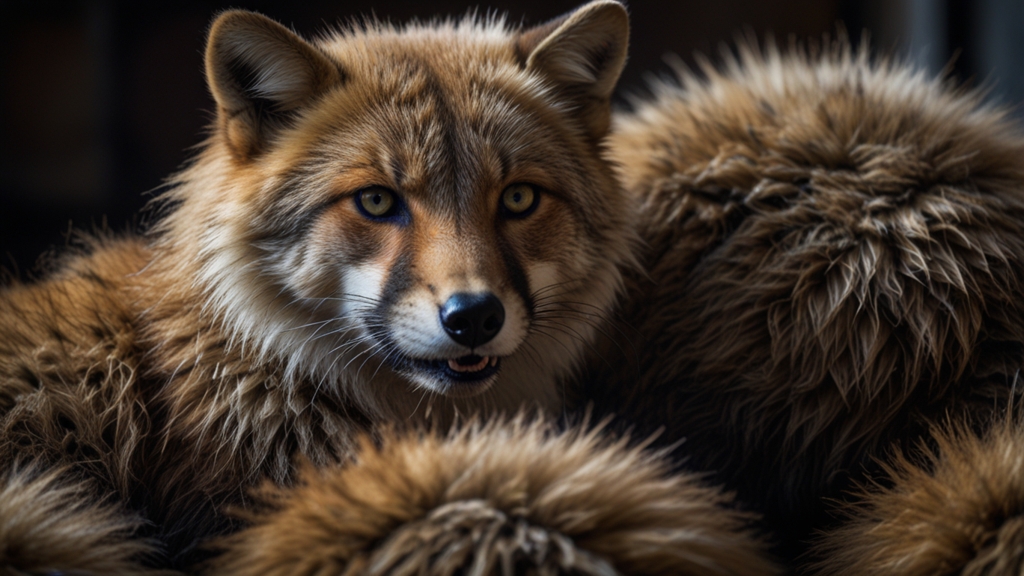Mammals Undercover: The Secret Lives of Elusive Species
Mammals have always captivated human interest, from the majestic elephants in African savannas to the playful dolphins in the ocean's depths. However, not all mammals are as visible or as easily studied. Some species are elusive, living in the shadows, away from the prying eyes of humans. These intriguing creatures, camouflaged by their habitats and secretive behaviors, reveal the diverse strategies of survival in the animal kingdom.
The Masters of Stealth
When we think of elusive mammals, the first to come to mind might be the snow leopard. With its iconic, dense fur patterned to blend perfectly with the rocky, snowy terrain of the Himalayas, the snow leopard is a master of stealth. Rarely seen, its nocturnal habits make its daytime sightings a rarity, keeping its numbers and behaviors a continuous enigma for researchers. Similarly, the Amur leopard, critically endangered and inhabiting the temperate forests of Russia, employs similar camouflage tricks to avoid detection.
The snow leopard's elusive nature is not just a part of its survival strategy but a poignant reminder of the fragile ecosystems they inhabit and the threats they face from poaching and habitat loss.
Little-Known Nocturnal Wanderers
Under the cover of night, many mammals come alive, taking advantage of the darkness to search for food and avoid predators. The Aye-Aye, a rare lemur found in Madagascar, is one such nocturnal wonder. With its elongated middle finger designed for extracting insects from tree bark, the Aye-Aye’s unique adaptations make it one of the most elusive and fascinating primates.
Another night-time wanderer is the pangolin. This scaly anteater has the dubious distinction of being the most trafficked mammal in the world. Its nocturnal habits, coupled with its defensive strategy of rolling into a ball, make it a challenging subject for study and conservation efforts.
Silent Swimmers and Subterranean Dwellers
Underwater, the elusive nature of certain mammals becomes even more pronounced. The Saimaa ringed seal, found only in the freshwater lakes of Finland, evades human detection by living under the ice for much of the year. Their dependence on a unique habitat makes these seals not only elusive but highly vulnerable to environmental changes.
Similarly, subterranean mammals like the naked mole-rat of East Africa live most of their lives underground, away from human sight. Their complex burrow systems and social structures are subjects of fascination. Despite their near-blindness, these creatures navigate their dark world with precision, exhibiting behaviors that challenge our understanding of mammalian life.
Elusive Mammals and Conservation
The mystery surrounding these elusive species often complicates conservation efforts. Limited sighting and tracking data make it hard to create effective protection plans. However, the secretive nature of these mammals also garners a unique interest from scientists and naturalists. Advanced technologies such as camera traps and GPS tracking have opened new avenues in studying these hidden creatures, shedding light on their behaviors and habitats.
The secret lives of elusive mammals underscore the importance of biodiversity and the need to protect even the unseen corners of our planet. Their survival is a testament to nature’s ingenuity and adaptability.
Conclusion
Elusive mammals may not capture headlines as frequently as their more visible counterparts, but their stories are no less vital. Studying these secretive species gives us deeper insights into the complexities of ecosystems and the delicate balance required for their survival. As we uncover the secrets of their lives, we also uncover broader truths about nature, resilience, and the ongoing need for conservation.
By turning our attention to these undercover mammals, we not only expand our understanding of the natural world but also reinforce the necessity of protecting the diverse forms of life that share our planet.











